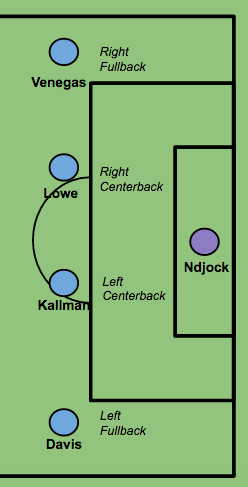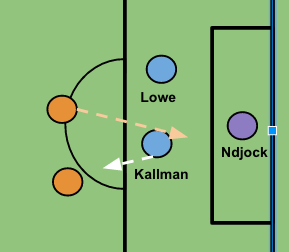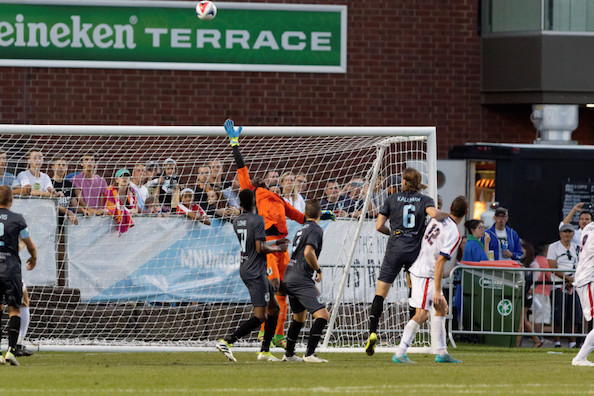For people getting into soccer, it can sometimes be hard to understand the lingo used in the game. Most people understand the basics of the game — eleven to a side, can’t use your hands, even offside is pretty well understood. But when soccer writers start using terms like false-nine, overlapping fullbacks, and sweeper-keeper, it can become confusing to understand what teams are actually trying to do out on the pitch.
Soccering 102 is for people who know the basics but want to learn more about soccer. In this slightly irregular feature, I’ll be going beyond the basics to help explain different roles and positions on the field. In this article, I will focus on center backs, particularly in the flat back four employed by Minnesota and most other teams in the US and Canada.
What is a Center Back (and the “flat back four”)?
In most modern formations, a team will employ a back four, or four defenders. Two of these will be fullbacks, or playing out wide. The two center backs will be in the center of the field.

A flat back four is when the back four plays in a line, parallel to the end line. This line makes it easier for these back four to set an offside trap, as no one player is keeping the attacking players onside.
Part of the reason for the flat back four is in response to the opposition. Most teams play some variation of a 4-3-3 or a 4-2-3-1 with only one forward in the center of the field. The flat back four allows the two center backs to focus on the one forward without devoting too many defenders to guard that space in the field.
A center back’s primary responsibility is defense. In many respects, it is not a glamour position. Nobody tends to notice when center backs do their job, but a mistake can lead to a goal or good attacking opportunity from the opponents.
In the modern game, a center back also needs to be an efficient passer and handler of the ball. Most offensive attacks begin with the center backs, a type of attack called “playing it out of the back.” For most teams, the center backs will have the most touches of any of the players on the team as they work the ball up the field and provide an outlet for the midfielders.
Defensive Responsibilities
The center back’s primary responsibility is to defend the goal and the area in front of it. It is vitally important that no player gets in behind the center back as he is literally the last line of defense before the goalkeeper.
All positions on the field require players to work together and the center back is no different. The center back must communicate with his fellow center back, the full back on his side, as well as the holding midfielders.
The center back has to be able to be aware of the game-state, the opposition’s attack as well as the position of those players around him. When Minnesota plays with two holding midfielders, there is a lot of fluidity in the roles. As the full backs and the holding midfielders each move forward to join in the attack, the center backs’ position and responsibilities will change.

When the ball is in the middle third of the field, the center back and the rest of the defense will play more of a zonal marking scheme. That means that the center back will guard an opposing player only if that player enters the space around him. When that opposing player leaves that space, he will pass them off to the player whose space they are leaving.
As the opposition moves into Minnesota’s defensive third and the 18 yard box, the team will shift into a man-marking scheme, meaning that the defender will take the player that is the most dangerous position and nearest to him and mark him throughout the rest of the possession.
This can sometimes put a center back seemingly out of position as they remain on a player. The change to a man-marking scheme must be universal, as a single player still playing zonally can leave space for a player to break free and score.
A center back needs to make sure that as they are marking players in front of the goal that they do not move out of position and leave a space in behind. These two responsibilities can seem to be at odds and require the entire back line as well as the defensive midfielders to work together to ensure that every player is marked and no gaps appear in the defense.

All it takes is a center back taking a step in the wrong direction and the opposing team can find itself open in front of the goal. The center back is one of the toughest positions to fill on the field and one of the most important.
Any other positions around the field that you are interested in learning more about? Post in the comments!

Leave a Reply